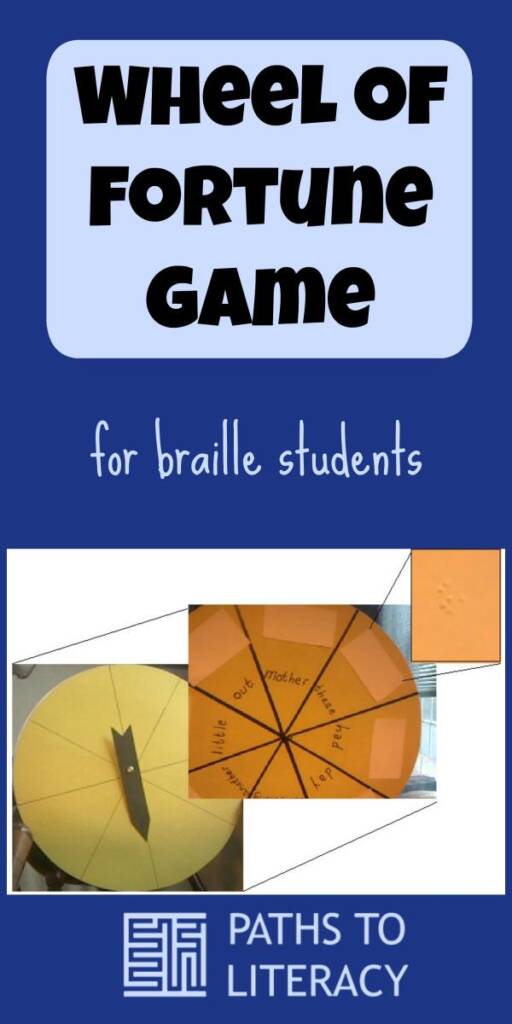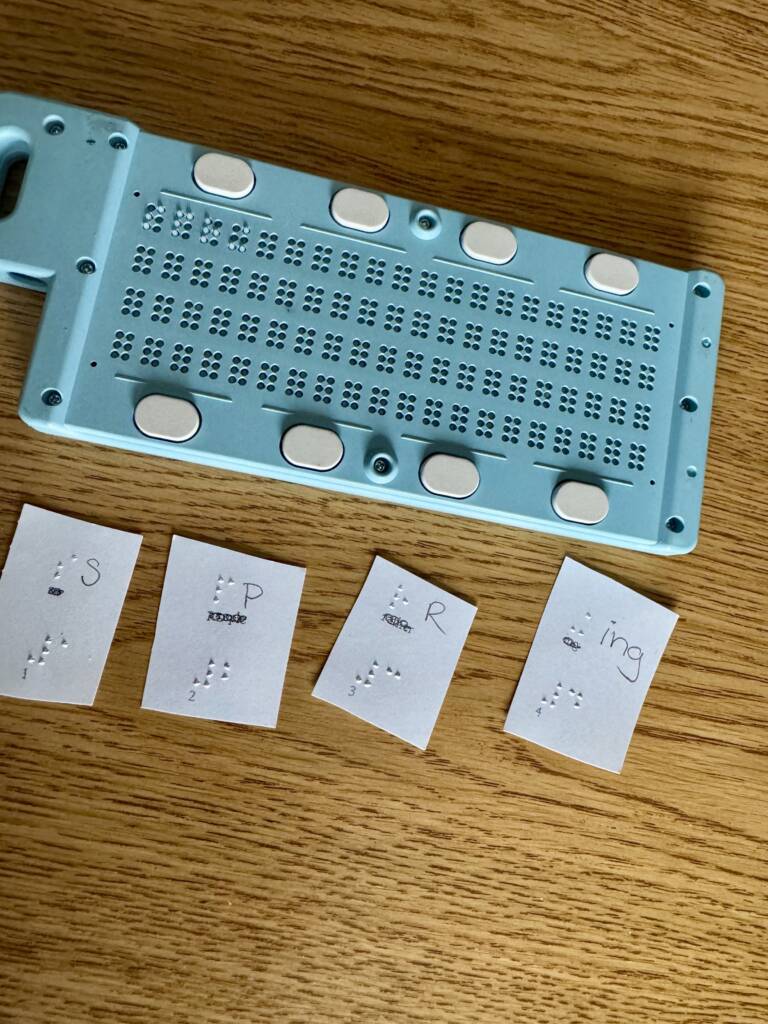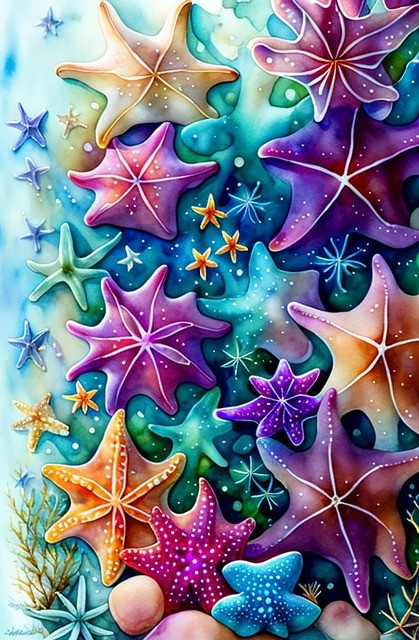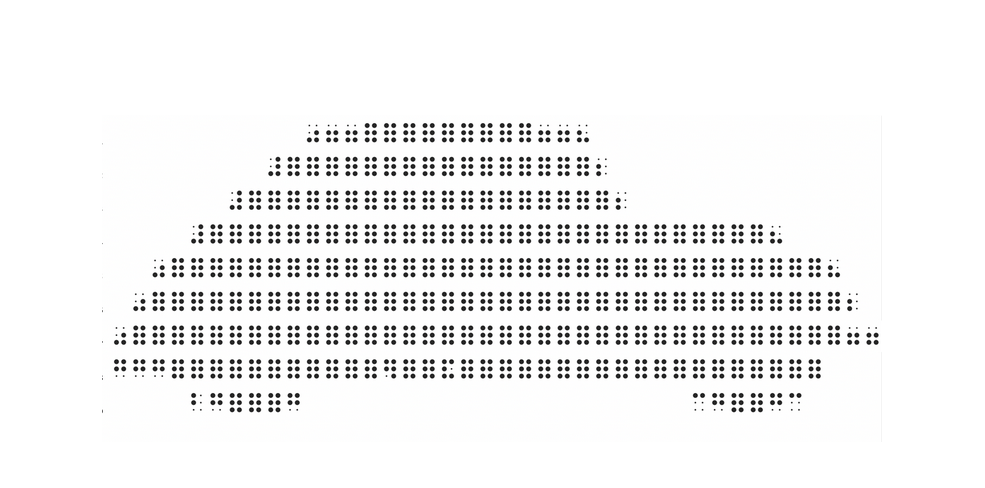This variation on sight reading strategy incorporates dual media, and can be adapted to suit any subject matter or theme. This version incorporates simple addition and braille awareness into the scorekeeping approach as well.
This game was developed by members of the Braille I course of the Northeast Regional Center for Vision Education (NERCVE), of the University of Massachusetts-Boston.
- Contracted braille reader – ex: The Cat in the Hat, by Dr. Seuss
- Contracted word list- ex: mother, day, these, had, little, out, something, another
Materials
WHEEL
- Cardboard or wooden circle
- Cardboard or poster board for arrow. Tactile or electric tape
- Marker
- (1) brad
- Assorted washers and/or nut as needed
SCORE BOARD
- (1) egg carton per player
- (12) Black and red rocks per player
- Adhesive (double-sided tape or super glue)
- Brailler or slate and stylus for brailing
Preparation
Construct the game:
- Create or purchase a cardboard or wooden circle, about 12-16″ in diameter. Cake circles can be purchased at a craft store in the baking area to remove the need to cut a round shape.
- For low vision players, use yellow poster board for a high contrast yellow/black color scheme. Separate the wheel into 6 or 8 sections, one section for each vocabulary word. Use tactile tape to divide the wheel so that students can feel the separations of sections.
- Cut an arrow shape out of cardboard or poster board. The arrow needs to be large enough for small hands to spin, and sturdy enough to withstand a lot of play. You may also consider using a plastic arrow from a commercial board game.
- Cut a hole in the center of the arrow and circle to affix them together. Use a standard-sized brad to attach the arrow to the wheel. Experiment with washers or nuts to lift the arrow off the board a centimeter or two. This reduces friction with the wheel itself and allows for better spin.
- Use a brailler or slate and stylus to braille selected vocabulary words from the reader. Each section of the wheel will contain 1 vocabulary word. Use double-sided tape or other adhesive to attach the words to the wheel. Additional words can be switched out using double-sided tape or Velcro. To reuse the wheel for other readers and words, use Velcro to attach brailled words to the wheel. Use the marker to write the word in print in the section as well.
Score Board Instructions:
- Cut each egg carton in half to create a replica of the braille cell (two cells wide, 3 cells long). Cut the side tab and the top off each carton. Use a Perkins Brailler or Slate and Stylus and braille the word “top” two times. Cut each word “top” out separately.
- Affix the word “top” to each half-egg carton to identify the correct position. The upper left corner works well for this, as it is a flat surface area. Be careful not to put any adhesive under the braille dots, as this affects them and squishes the cells down.
- Use rocks or similar tokens to simulate the dots. They should be large enough for children to handle confidently, and irregular shaped so they cannot roll or bounce away from the play area. Gather 12 braille “dots” for each score board. Although your student will not need all of their rocks, it is good to give your student the opportunity to display their understanding of each answer with as many options as possible.
- You now have everything you need for your student to keep score. The first egg carton is used to create the number indicator; the second carton is used to create the point value of the score.
Procedure
How to Play
- Player 1 spins the arrow on the wheel. When the arrow stops, the player will tactually read the braille word in the section where the arrow points.
- The player will score one point for correctly identifying the word. The player places a single rock in cell one of their scoreboard to represent 1 point.
- Play moves to the next player.
- As the players accumulate points, they update their score boards by adding and shifting rocks to reflect their totals. For example: on a second point, a player places a second rock in cell 2, to represent 1-2, or 2 points. Three points is represented by rocks in cells 1-4, and so on.
Variations
- For a longer-lasting game, use a wooden wheel or lazy susan with a Velcro surface that allows you to easy switch out a library of themed discs.
- Allow students to trade in points for prizes, such as school supplies, small trinkets, or class privileges.
- Add tactile information to the wheel as well to vary skills used and information gained.
- Expand your reach of standards by using Wheel of Fortune in a themed unit, or Quiz format.





